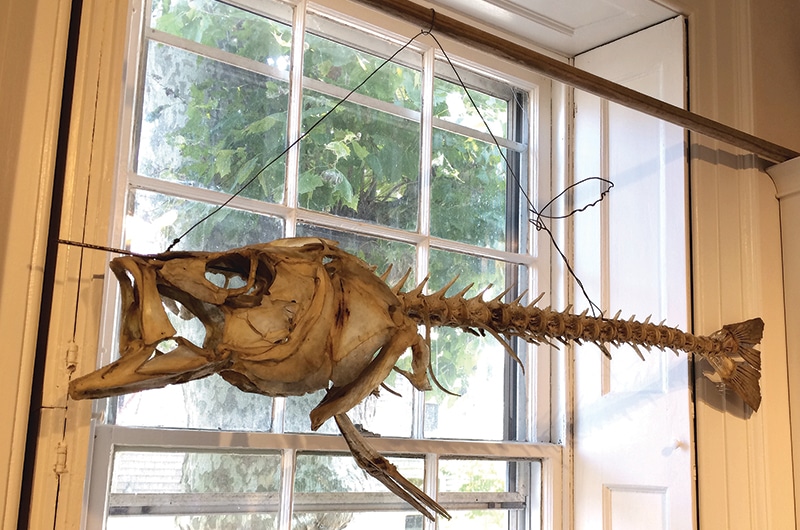~ by Katherine Brooks, Maria Mitchell Association ~

Striped bass are a favorite challenge for many anglers—an alluring catch because of its size and quick strength. The population of this fish has been in flux since the 1980s, when the population took a major dip, a moratorium was put in place along most of the East Coast. The moratorium worked, and by the mid 90s the population was once again at a healthy enough level to continue sport fishing. The mid-2000s saw a similar situation: striped bass fishing was over the target catch level, and the species was not reproducing fast enough to repopulate. Since then, populations have recovered, but there is a minimum catch length of 28 inches.
The Maria Mitchell Association Aquarium has a few striped bass that they will be releasing on Saturday, September 3 as part of the annual public release party. This year, the Aquarium will be releasing everything in the tanks into the harbor except for the tropical fish, organisms recently sent from Woods Hole, and an orange lobster named Clementine. One in 10 million lobsters are orange (caused by a rare genetic mutation), and Clementine is certainly an anomaly.
Over the summer season the Aquarium acquired an interesting array of sea life. Most recently a 9-year-old girl rescued a female seahorse at Cisco beach. She saw the seahorse floating in the surf, put the seahorse in a water bottle with water, and biked it to the aquarium. Unsure if the seahorse would make it over night, the staff did everything they could to help revive seahorse, but they did not have high hopes for survival. With the efforts of everyone involved, the seahorse pulled through and is now living happily at the aquarium. Nantucket is in the northern most range for seahorses, and to have rescued a seahorse is a treat for staff and guests alike.
Woods Hole Oceanographic Institute recently provided the aquarium with an array of marine life including some sea urchins, a dogfish egg case, parchment tubeworm, and sea stars. The newly collected organisms are an exceptional addition to the aquarium. Visit the newest tank additions or join us for the free public release day this Saturday at 28 Washington St from 10 am to 1 pm.
The MMA was founded in 1902 to preserve the legacy of Maria Mitchell and to promote her belief in learning-by-doing. An astronomer and natural scientist, as well as an educator, Maria Mitchell shot to worldwide fame when she discovered a comet in 1847. For her discovery, she was awarded a gold medal from the King of Denmark – the first American and first woman to receive the honor. She served as the Professor of Astronomy and Mathematics at Vassar College from 1865 until 1888. Today, the MMA operates two observatories, a natural science museum, an aquarium, and the birthplace of Maria Mitchell. The MMA conducts scientific research, leads classes and workshops for people of all ages year-round, and welcomes thousands of visitors to its museums and observatories. For details, visit mariamitchell.org.


